Ask anyone why LED lighting is better than HPS, and there is a good chance they will answer: "Energy saving." The market is well aware of that, and as energy prices keep rising, it is an important reason why growers have switched to LED. Sometimes completely, and sometimes in a hybrid system (where they are often forced to switch the HPS lights off).
But any thought to how different lighting affects plants? Not enough, an increasing part of the market realizes. In the Netherlands, Ary de Jong is running two trials with lisianthus and cucumber in the World Horti Center on behalf of RED Horticulture, a lighting supplier. He wants to show what their fixtures with special light recipes do to the plants or, even better, their morphology.
Those trials ran throughout the winter and will end on March 31. "I, therefore, urge growers to come and take a look, even if they don't cultivate lisianthus or cucumbers. I'd like to show them what light does to a crop. There's more to it than just saving energy," Ary begins.
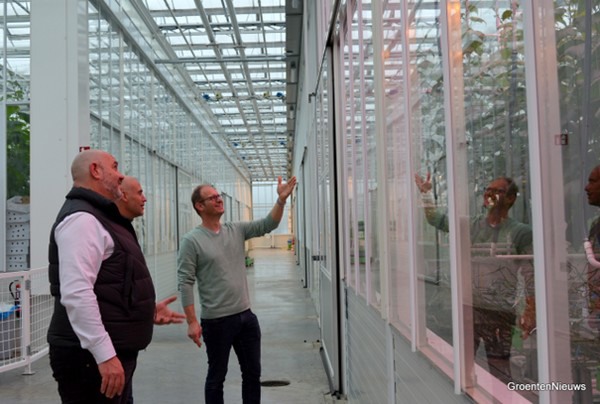
José Carretero and Alex Hogervorst of RED Horticulture with Ary de Jong of HortiTech at the section that houses the cucumber demo.
Each variety reacts differently
There are two adjacent sections of lisianthus in the demo greenhouse. This is a follow-up to last year's chrysanthemum trial. In that, four light recipes were tested on several varieties. In the lisianthus trial, two RED light recipes are being used. The goal?
To get as much volume as possible at the top of the plant. Comparing the two sections in late March, it quickly becomes apparent that there are many white flowers but few purple and pink ones. Yet both sections house an equal number of plants of all colors. That shows that each variety responds differently to light spectrums.
Ary is pleased with this result. It provokes thought. The outcome may not be surprising, but in today's market, several varieties or crops are still grown under one fixture with a limited spectrum selection. Red light is often prominent. It is also 'cheap' light since other colors in a fixture consume more electricity. "Further insight has also shown that far-red is important."
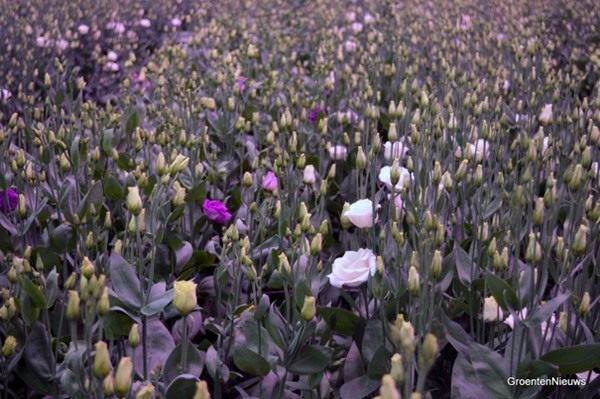
Lisianthus growers want the tops of their plants to have ample volume. You can control this quality aspect by using the correct LED lights.
Light recipe per cultivation phase
Keep doing what you are doing, and you will keep getting what you get. RED Horticulture's Alex Hogervorst and José Carretero are sure of that. The Photobiology Support Manager and Sales Manager have had an office in the World Horti Center since the beginning of this year. That makes a Dutch branch of the originally French LED supplier a reality.
RED Horticulture has been researching LED light recipes since its inception five years ago. It also develops fixtures in which the spectrum can be controlled. "France has much less of an HPS tradition because there's more natural sunlight. They, therefore, quickly started considering LED," José points out.
Two years ago, the company deliberately entered the Dutch market. LED lighting is becoming more established in the Netherlands, but there is often still a lot of focus on energy savings. Growers who could afford it have recently quickly switched to LED.
In the (2022) chrysanthemum and lisianthus (and also the cucumber trial, described in more detail here) tests, they used three lighting recipes for three growing phases: rooting, vegetative, and generative. Ary quickly points to the root phase. "That's where you build the plant, so choose a spectrum that's good for root development."
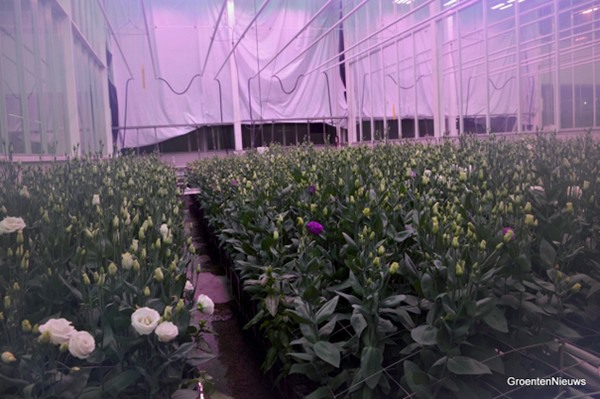
In the chosen varieties, the white one fared best under the chosen light regime.
Other benefits
That phase needs extra attention, especially in shorter crops with several consecutive cycles, such as chrysanthemums. Comparing the two sections shows that, in this lisianthus trial, building the 'plant' more in one led to better results. The crop is much fuller and has many more buds. "With light recipes, you can also steer for quality," says Ary.
He sees other practical benefits too. "It usually takes six days to harvest lisianthus, with growers going through the bed three times to pick all the flowers. Using light recipes, you can grow an even crop, thus cutting out that third round. That also makes it more profitable." So not just energy savings, but potentially interesting for growers' bottom line too. "You have to seek the benefits of LED in other areas as well," José agrees. "LED is more than just more economical than HPS."
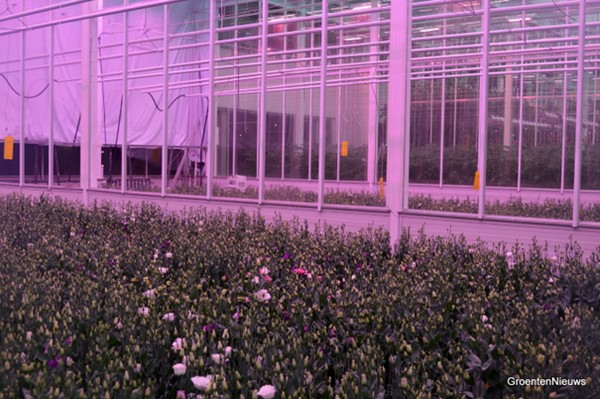
This section has fuller crops with 30% more buds. Ary measures the crop's length, breadth, and girth at a grower that has the same crop growing at the same time. Three plants from both crops are regularly compared visually and via dry matter analysis.
A different view
The lisianthus trial is almost over. Nonetheless, it is not the first, and certainly not the last, test. Even roughly ten years ago, light colors were being studied. Ary remembers a trial where multiple spectra were examined in their old demo nursery. The researchers looked at artificial sunlight, blue, green, red; you name it. "We observed many things, but with today's knowledge, you'd consider it differently," he concludes. To see that different view, he invites growers to the trial.
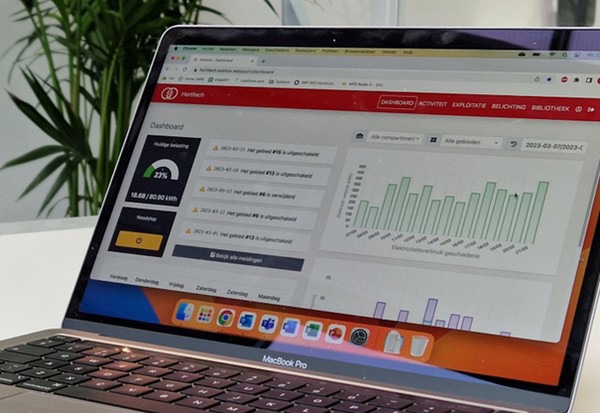
MyRED platform offers insight into the cultivation data. RED Horticulture provides a scalable concept with fixtures in four wattages, choices of light recipes, and a MyRED platform to steer cultivation with the help of data from the monitoring system Solstice. You can use sunlight or energy prices to control the crop.
For more information:
Alex Hogervorst
RED Horticulture
Tel.: +31 (0) 637 295 186
Email: alex.hogervorst@horticulture.red
www.horticulture.red
Ary de Jong
HortiTech
Email: ary@horti-tech.com
www.horti-tech.com
